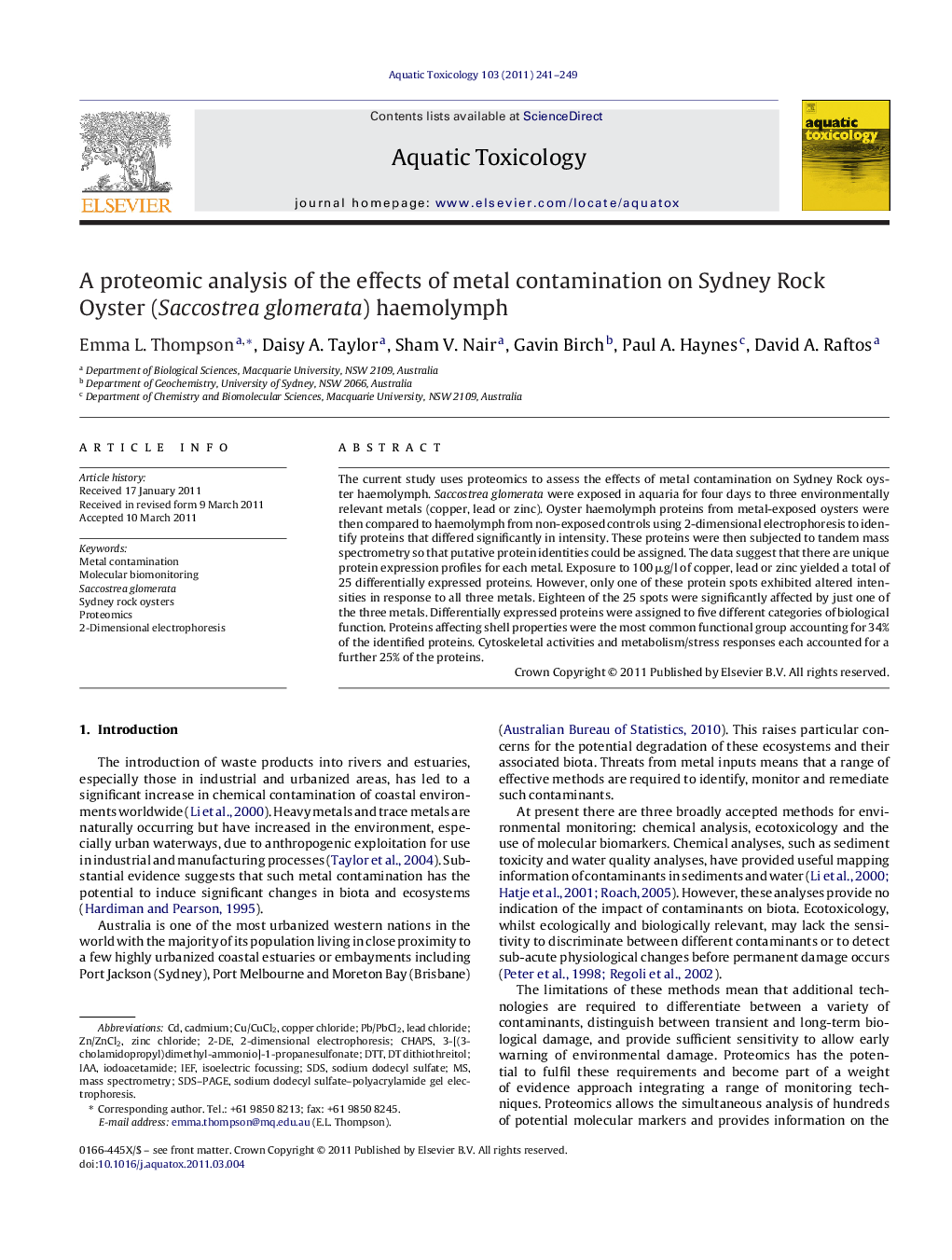| Article ID | Journal | Published Year | Pages | File Type |
|---|---|---|---|---|
| 4529878 | Aquatic Toxicology | 2011 | 9 Pages |
The current study uses proteomics to assess the effects of metal contamination on Sydney Rock oyster haemolymph. Saccostrea glomerata were exposed in aquaria for four days to three environmentally relevant metals (copper, lead or zinc). Oyster haemolymph proteins from metal-exposed oysters were then compared to haemolymph from non-exposed controls using 2-dimensional electrophoresis to identify proteins that differed significantly in intensity. These proteins were then subjected to tandem mass spectrometry so that putative protein identities could be assigned. The data suggest that there are unique protein expression profiles for each metal. Exposure to 100 μg/l of copper, lead or zinc yielded a total of 25 differentially expressed proteins. However, only one of these protein spots exhibited altered intensities in response to all three metals. Eighteen of the 25 spots were significantly affected by just one of the three metals. Differentially expressed proteins were assigned to five different categories of biological function. Proteins affecting shell properties were the most common functional group accounting for 34% of the identified proteins. Cytoskeletal activities and metabolism/stress responses each accounted for a further 25% of the proteins.
